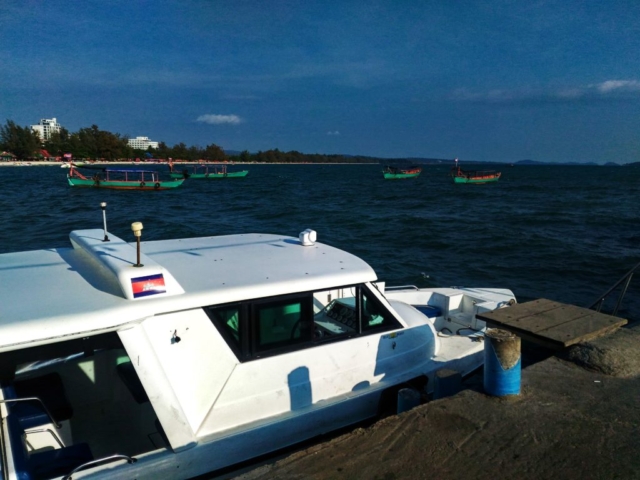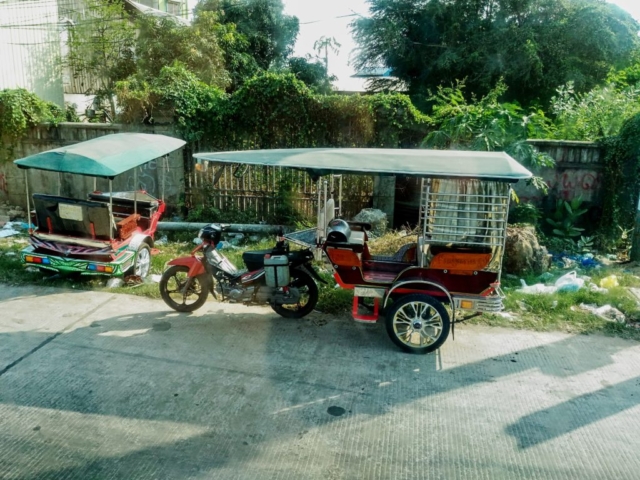War and continued fighting seriously damaged the transport system of the whole country. Weak infrastructure has also hampered emergency assistance and has caused huge problems in public procurement and distribution.
Warning – Thailand entry
Beware of frauds when entering Cambodia inland. The most common is the extra visa fee for the official fee, which currently stands at $ 30. Ignore anyone who wants to help you on the border. The only one who should check your passport is an immigration officer. He can offer you for a “VIP service” for 200 Bahts, and you do not have to wait in the queue.
- 1st fraud – visa (you pay more)
- 2nd fraud – bus (you need to wait until the bus will be full at the end of the queue)
All six border crossings with Thailand are open from 7:00 to 8:00 pm and you will find an offer of all Cambodian visas.
Warning – Vietnam Entry
Several bus operators in Ho Chi Minh City and Phnom Penh, especially Kumho Samco and now Mekong Express, cheat foreign tourists by charging an additional $ 5 for Cambodian wine upon arrival. The situation with a visa surcharge is common because in all buses the operator selects passports before he gets to the immigration officer on the side of Vietnam. Sapaco Tourist does also frauds too, and even if you show that the official price is only $ 30, they want $ 35, because $ 5 is “for the Cambodian police.”
Laos Entry
Cambodian and Laotian visas are available, but they also require a USD 2 fee on both sides of the border. Laotian officials charge $ 2 for leaving the country. Travel agencies on both sides offer travel packages too.
Airport
Phnom Penh International Airport is the largest airport in the country. The second largest airport in Cambodia is Angkor International Airport in Siem Reap’s major tourist city. The third most widely used airport is near Sihanoukville.
National flights
Airports that currently operate regular passenger flights are in Phnom Penh, Siem Reap, and also in Sihanoukville. The main flight operator from Sihanoukville is Cambodia Angkor Air. From Phnom Penh and Siem Reap, a home tax is 12 USD.
Water transport
Do / from Laos – A 90-minute speedboat ride on the Mekong River north of Stung Treng.
Do / from Thailand – There are no ferries between Cambodia and Thailand. The Sihanoukville – Koh Kong ferry is no longer running.
Do / from Vietnam – It is possible to travel between Ho Chi Minh City and Phnom Penh by boat or a combination of road and boat. Speedboats depart daily from Chau Doc in the Mekong Delta in Vietnam and last 5 hours before arriving in Phnom Penh. Chau Doc takes Ho Chi Minh City for 4 hours.
Extensive inland waterway transport was important in domestic trade. In some areas, particularly west of the Mekong River and north of the Tonle Sap River, the villages on the waterway were completely dependent, mainly on the import of food and other things needed to live. Cambodia has two main ports, Phnom Penh Port and Sihanoukville Port. The port of Sihanoukville is widely used to transport people and cargo to Cambodian small islands (Koh Rong, Koh Rong Sanloem).
Ferries operate seasonally on many major rivers. Major routes include Phnom Penh to Siem Reap and Siem Reap to Battambang. Ships are slower than road transport, foreigners have higher prices and are sometimes overcrowded and dangerous. Speedboat from Phnom Penh to Siem Reap costs $ 33 and takes about 6 hours, departs at 7.30 am and offers a gorgeous, though the monotonous view of rural life along the Tonle Sap River.
Road transport
At present, 50 percent of roads and motorways are covered with asphalt material and in good condition. Part of the road is made of crushed stone, gravel, or improved soil, and the remaining roughly 30 percent are untreated. In 1981, Cambodia opened a newly repaired section of National Route 1, which runs southeast of Phnom Penh to the Vietnamese border.
Now Cambodia is modernizing major highways according to international standards, and most of them have improved significantly since 2006 (especially the border, coast, and large cities).
Motorcycles and scooters are the most common vehicles of the transport. You can see abundantly so-called TUK-TUK (carriages associated with a motorbike). Just stand on the corner and someone asks you if you need tuk-tuk (Be careful, they tell you a higher price). Unlike their Thai counterparts, they are by no means organized or trained and don´t wear the identifiable vest, so you travel at your own risk. Always you should negotiate the price in advance. All motorcycle drivers are legally obliged to wear a helmet as well as passengers.
Motorcycle rental is available in many cities, except Siem Reap, which has banned this practice. Remember, however, a different driving style, a high degree of accidents, and the fact that Cambodia doesn´t accept an international driving license.
Due to the expansion of mobile phones, applications have become popular in recent years, thanks to which you can order GRAB (the same as UBER).
Larger cities also have a bus station. Giant Ibis has the best reputation for comfort and safety. Since the Giant Ibis is often sold, especially during the high season, PSD Xpress, a new company with the same high-quality standards as the Giant Ibis, is a great alternative. Other companies such as Sorya (formerly Ho Wah Genting), GST, Capitol Tours, or Paramount Angkor transport are a little cheaper but staff don´t speak English and are often overcrowded.
The www.camboticket.com website offers a selection of several bus and ferry operators. Reservations can be made online with instant confirmation and issued electronic tickets, and payment can be made securely via payment cards (MasterCard / Visa), WING money transfer and cash on delivery (within Phnom Penh).
Bus travel is generally cheap and travel from Phnom Penh to Siem Reap or Sihanoukville costs approximately 6 to 12 USD. Vehicle safety, including commercial buses, is a big problem. There are dozens of bus accidents on the road between Phnom Penh and Battambang, and yet most are unreported. Drivers are often untrained, impatient, and at least once drunk (according to those working at petrol stations on the road).
From 2014, Phnom Penh has a line air-conditioned city buses. The fare is KHR1,500 per trip regardless of distance. Older people (aged over 70), young children (less than 1 meter), disabled, monks, teachers, students, factory workers (until September 2019) travel free of charge from 2018.
Line 01: Kilometer 9 ← → Boeung Chhouk
Line 02: Aeon Mall 2 ← → Takhmao
Line 03: Russey Keo Garden ← → Borey
This line goes to Phnom Penh International Airport and is the cheapest option to travel.
Line 4A: Russey Keo Garden ← → Borey Santepheap 2
Line 4B: Russey Keo Garden ← → Kombol
Line 05: Aeon Mall 2 ← → Aeon Mall 1
Line 06: Borey Rung Roeung ← → Century Plaza Market
Line 7A: Kilometer 9 ← → Aeon Mall 1
Line 7B: Kilometer 9 ← →
Line 08: Kilometer 9 ← → Borey Rung Roeung
Line 09: Borey Santepheap 2 ← → Special Economic Zone
Rail transport
Cambodia has 612 km of the railway network, consisting of two lines originally built at a time when the country was a part of French Indochina. Due to the damage during the civil war, the railways were in a dilapidated condition and all services were suspended until 2009. From 2016 Phnom Penh and Sihanoukville are available for freight and limited passenger transport. Passenger trains run from Phnom Penh to Sihanoukville (every Friday afternoon at 15:00 and at 7:30 at weekends). A personal train also runs every 2 hours in Phnom Penh to Pochentong Airport.
The railways are funded by the Cambodian government, the Australian Agency for International Development and the Australian Toll Holdings, which will be operated under the name of Toll Royal Railways and will complement the missing links of the Trans-Asian Railways. The first line was opened in October 2010 between Phnom Penh and Touk Meas.
Bamboo train
The bamboo train is now only a tourist attraction on an 8km long section of tracks near Battambang.















